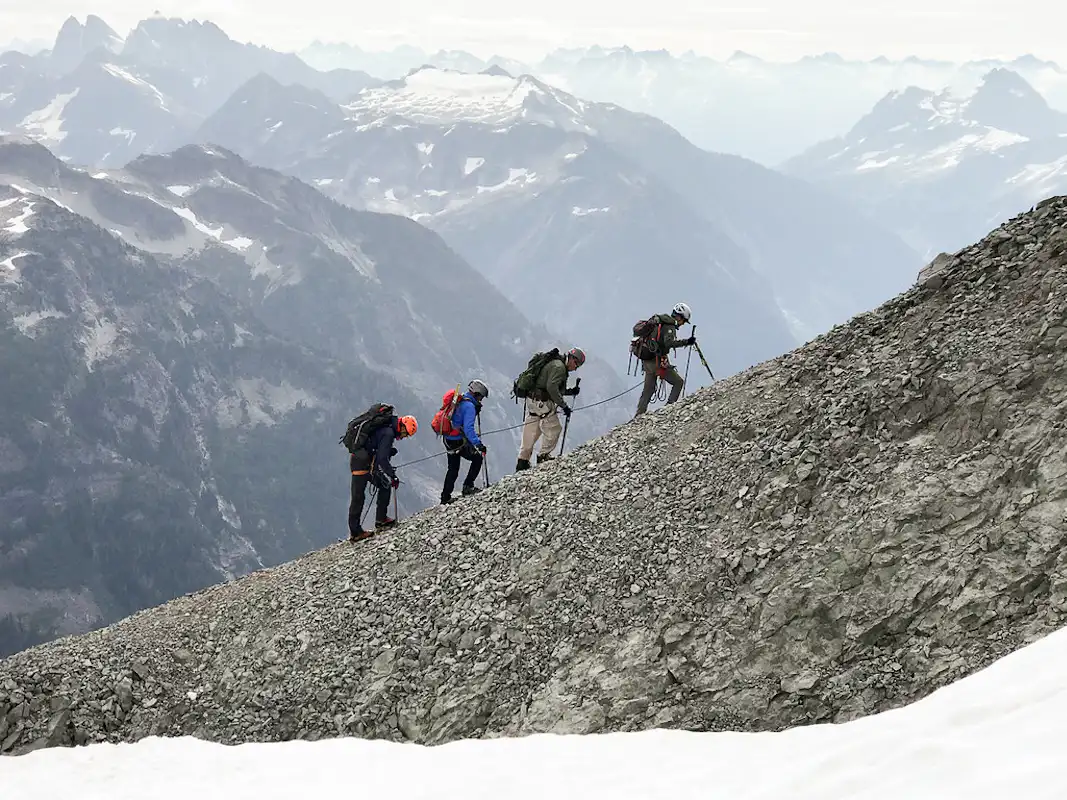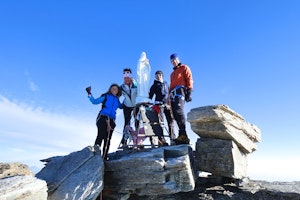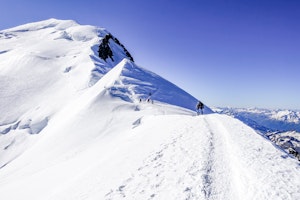Mountain climbing is a popular pastime with millions of people heading up various peaks on all seven continents year-round.
While there are many factors to take into consideration when heading out on a mountaineering expedition – such as fitness, time of year and technical skill – it is always imperative to bring the correct equipment.
To ensure that you are properly prepared for your first (or next) mountaineering expedition, we’ve compiled a list of the necessary gear.
Remember to always check with your certified mountain guide what exactly you need to bring on the trip. Some guides will provide some of the technical gear or know where you can rent it nearby.
Technical equipment
Technical equipment is what you will use to help you climb the mountain. It can come in the form of things you wear and use to assist you in the performance of various climbing tasks.
Belay device
A belay device is a mechanical piece of equipment that assists the user in exerting tension on a climbing rope, so as to prevent a fellow climber from falling.
Belay devices are usually made out of metal and allow for minimal effort to be used in feeding out appropriate amounts of rope for climbers to use. They are generally required for climbing up rock or ice faces.
Many guides who provide group climbing equipment will provide belay devices for the climb. Otherwise, they can usually be rented.
Carabiners
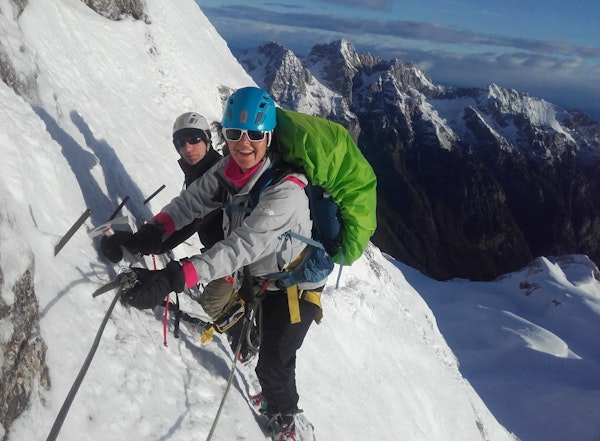
A carabiner is a metal loop – usually steel – with a spring-loaded gate, which can be used to quickly connect and disconnect parts of a system, such as a harness to rope.
Pear/HMS carabiners are most frequently used for belaying and rappelling since their size and shape accommodates the need to hitch with two strands of rope.
Any type of climbing expedition that requires roped travel or rock climbing will require the use of carabiners. These can generally be purchased at most outdoor sports stores and are useful to have for other purposes as well.
Crampons
Crampons are traction devices that are usually attached to the bottom of mountaineering boots. They are generally made with a steel alloy and have spikes on the bottom that help the wearer climb ice falls and keep traction on glaciers.
Crampons are generally attached to boots via a binding system, which differs depending on the needs of the user. The most common one for mountaineering is the step-in system, which fits well on most types of mountaineering boots.
These can generally be rented from outdoor sports stores, although some guides will provide them if they include personal gear in their fee.
Crevasse rescue equipment
Crevasse rescue equipment is essential when traveling on glaciers or over any other surface that might have holes or faults into which a climber could fall.
Basic crevasse rescue kit includes a lightweight pulley, locking, and non-locking carabiners, nylon cord, sewn slings, snow and/or ice anchors and ice axes.
Many of these will usually be provided by a certified mountain guide on an expedition.
Harness
Harnesses are generally required for mountaineering expeditions that include rock climbing or abseiling.
They secure people to either a rope or an anchor point and are usually made from a combination of cloth and nylon, which loop around each leg as well as the waist.
Harnesses can be improvised and made out of rope, however, it is much more common to use commercially provided ones, which generally have padding and attachment loops.
Harnesses can generally be rented from outdoor sports stores, although some guides will provide them if they include personal gear in their fee.
Ice axes
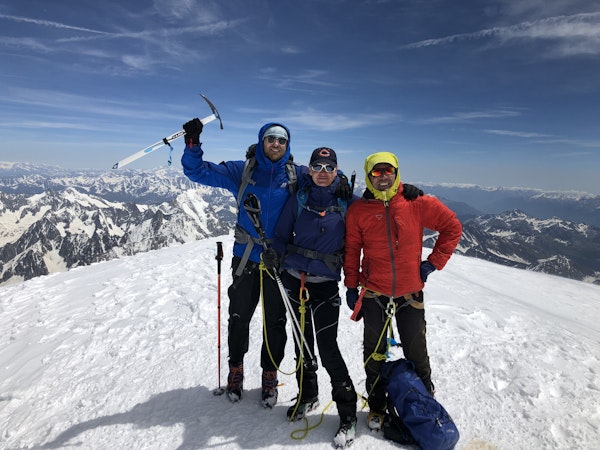
An ice axe is a multi-purpose tool that is used in most mountaineering expeditions in which one must climb an icefall or traverse a glacier.
When hiking across a glacier or ice field, ice axes may simply be used as a trekking pole, helping you to keep your balance on the ice. At icefalls or on steeper glaciers, they serve as a way to secure yourself to the ice and pull yourself up to the top.
They can also be used for self-arrest if you slip or fall on an icy surface, and in the improvised construction of a snow or ice anchor.
Ice axes can generally be rented from outdoor sports stores, although some guides will provide them if they include personal gear in their fee.
Rope
Any mountaineering expedition that includes steep scrambling, rock climbing or rappelling will require the use of rope. There are two main types of rope for these activities: dynamic and static.
Dynamic rope is best for climbing as it is more elastic, which helps in the case of a slip or fall. A static rope is stiffer and better suited for rappelling. Mountaineers will generally want to bring about 60 meters of rope that is between eight and 10 millimeters in diameter.
Ropes can be purchased at most outdoor sports stores, although most guides will provide rope to use on the expedition.
Clothing and kit
Bringing the correct types of clothing is imperative for a successful mountaineering expedition. While the exact items that you may need to pack vary depending on the season and where you are climbing, a few pieces of clothing and kit are generally required regardless of your destination.
Remember to always check with your guide to see exactly what clothing you need to bring on the trip.
Helmet
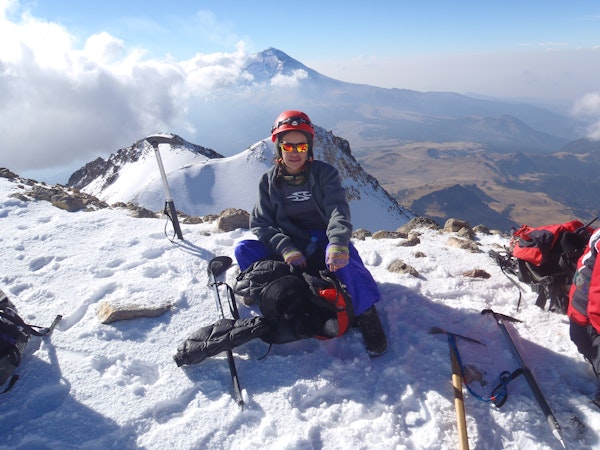
A helmet is an essential piece of safety kit for any mountaineering expedition. It helps protect your head against falls or falling objects from above.
The two main types of helmets include hard shell and shelled foam helmets. The former is made of a thick plastic outer shell with a thin foam liner inside. Shelled foam helmets have a thinner layer of plastic and a thicker layer of impact-absorbing foam on the inside.
For most mountaineering adventures, you will want a shelled foam helmet because it is lighter weight, although if you are heading on a trip that includes a lot of rock climbing, the hard shell option may be better.
You can buy mountaineering helmets at most outdoor sports stores.
Mountaineering boots
Not to be confused with hiking boots, mountaineering boots are taller, thicker and stiffer and have been designed specifically to maneuver in steep terrain. They are also designed to fit into crampons.
Mountaineering boots tend to be made out of leather, plastic or synthetic materials such as Kevlar. They have a removable inner liner, which can be taken out and dried when it is wet.
Most guides require these boots to be worn for mountaineering expeditions. You can buy mountaineering boots at most outdoor sports stores.
Mountaineering gloves
Mountaineering gloves are specially designed to keep your hands warm and dry while providing you with the necessary dexterity to grip and climb.
Which type you may want to get depends on your preferences as well as where you will be climbing. Heavier ones may be required for long-term exposure to very cold temperatures, while lighter weight ones are necessary if you will be tying and adjusting knots on ropes.
You can buy or rent mountaineering gloves at most outdoor sports stores.
Sunglasses and sunblock
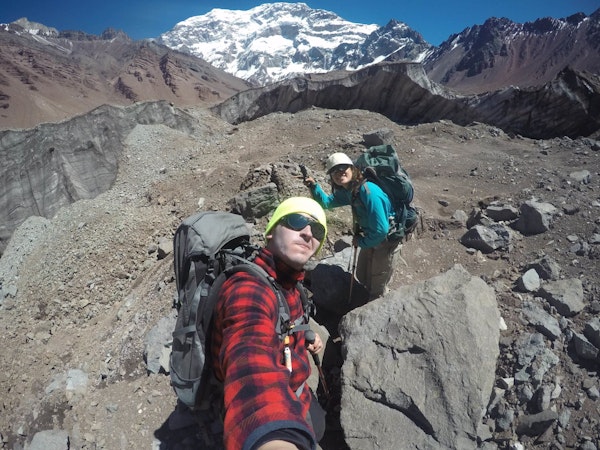
Whether your mountaineering trip lasts only a day or an entire month, you will spend a lot of time outside and unprotected from the sun.
Sunglasses help you see when there is a glare from the sun. which is often the case on glaciers and rock surfaces. Be sure to purchase properly polarized ones from a reputable outdoor sports store.
Sunblock is important to prevent sunburn. Depending on your completion you will likely want SPF 50 or higher. Lip balm with sunblock in it is also a good thing to bring with you.
Miscellaneous
Along with technical gear and clothing, there are a few other important items that should be brought along in order to ensure a successful mountaineering expedition.
Camping gear
If you are heading out on a mountaineering expedition that will take more than one day and do not plan to stay in a mountain hut or refuge, then camping will be the alternative. It is important to have the necessary gear to do so.
Mountain guides recommend bringing a four-season tent, sleeping bag (thermal or goose down, depending on how cold it will get) and cooking gear (such as a pot, propane tank, and cooking attachment and something with which to eat).
Some guides will provide all or some of these materials on the trip, but be sure to check before booking.
Backpack
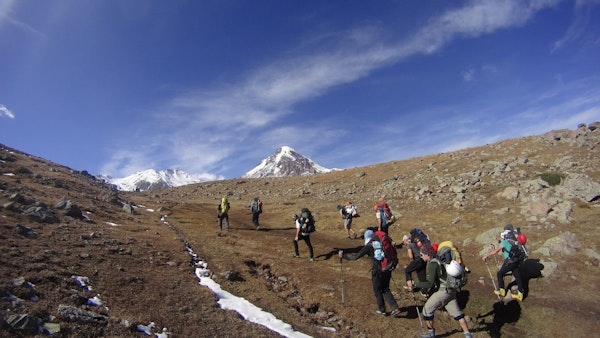
There’s a lot of stuff to carry on mountaineering expeditions from food and gear to cameras and personal effects. Most guides will ask that you bring a 30 to 50-liter backpack in order to carry what is necessary on the trip. These backpacks should be fairly lightweight, comfortable to wear and waterproof.
You can buy mountaineering backpacks at most outdoor sports stores.
Water bottles and water purification tablets
Most guides will ask that you bring at least a one-liter water bottle for personal use.
Water purification tablets may also be required on longer expeditions where it would not be feasible to carry all the necessary water with you.
Other
Always ask your guide for a complete list of items you need to pack as each mountaineering experience is unique and may require items that have not been mentioned above. Here is a shortlist of fairly ubiquitous items that can be used on any type of mountaineering expedition.
An identification card or passport
Insurance policy
Cash in local currency and credit card
Personal first aid kit
Toiletries
Camera and extra batteries
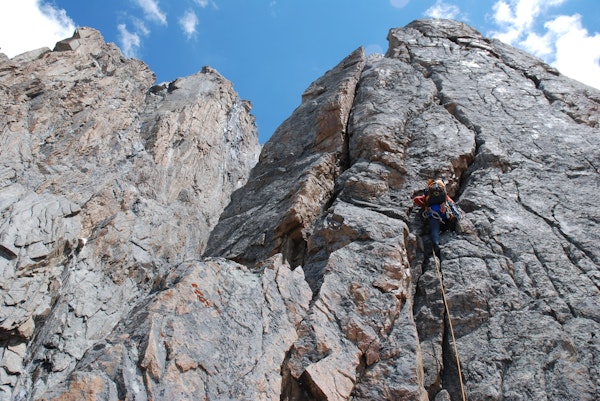
While most popular mountaineering destinations will have places to rent gear and many guides will provide you with some of their own equipment, it may be worthwhile to invest in some of your own gear as well.
Keep all the above information in mind, but also pick the gear that is right for you. That means taking recommendations from experienced guides and trying out various different versions of equipment.
Keep learning about mountaineering and check out some of the best places to head for this incredible outdoor sport!
